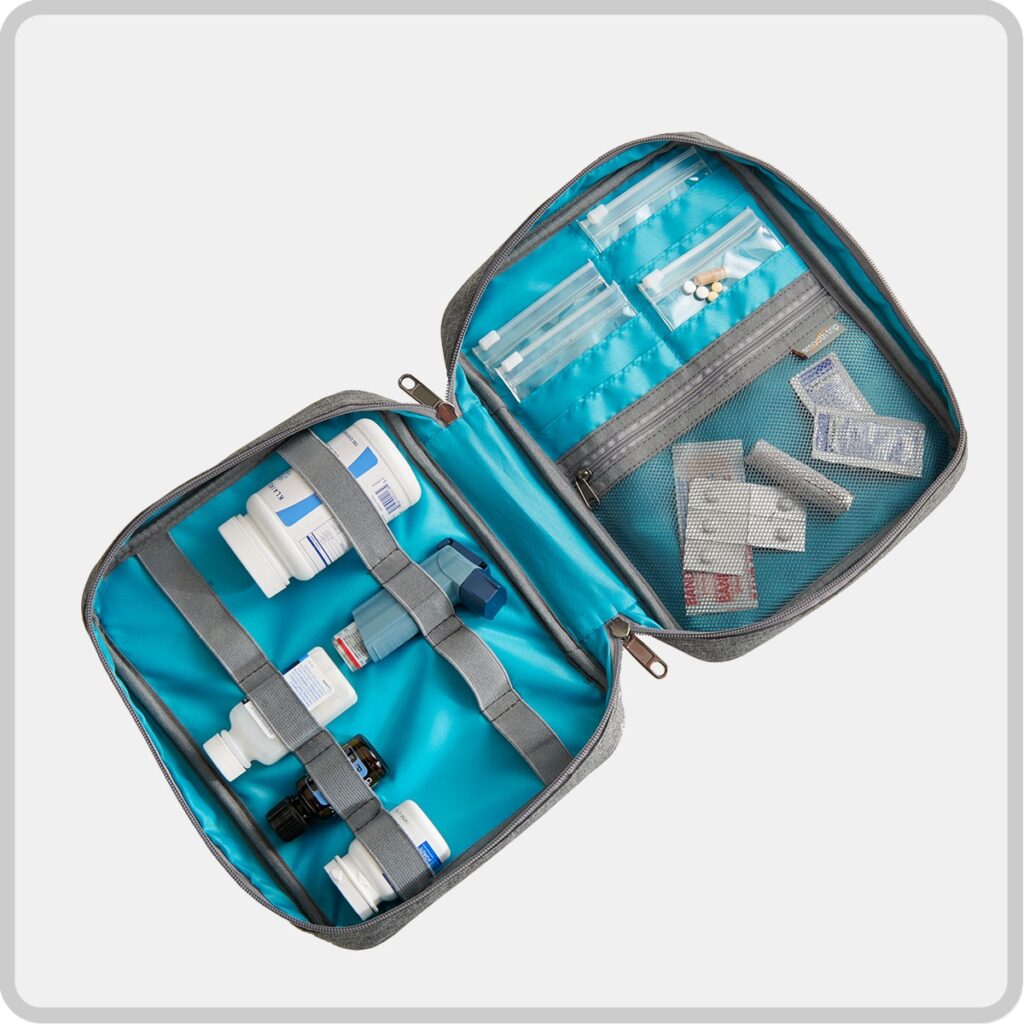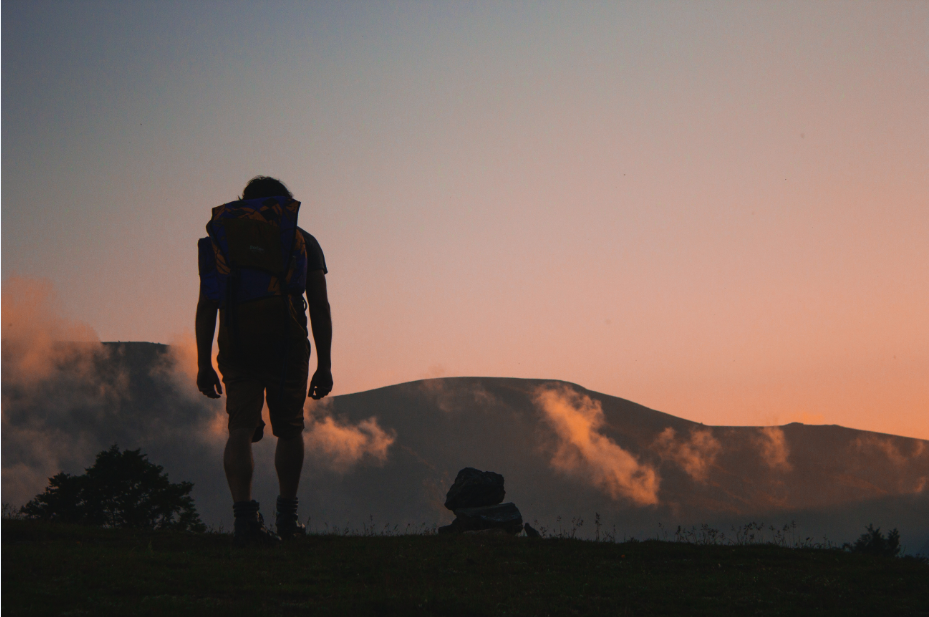Whether it’s a sleeping pill to get you through that long-haul flight to Australia or a motion sickness patch for your round-the-Horn South America cruise, travel medications are part of any savvy globetrotter’s bag of tricks. You’ll want to bring any prescriptions that you take regularly, of course, but a good selection of over-the-counter remedies and/or herbal supplements can make the difference between a great trip and one disrupted by jet lag, traveler’s tummy, or other common travel maladies.
Remember, however, that every drug has potential side effects. Taking any medication—even if it’s available over the counter—can have serious repercussions, particularly for children, pregnant women, or individuals with allergies, medication conflicts, and other contraindications. Consult your doctor before starting any new course of medication.
The following is a roundup of the most common maladies, along with suggested travel medications for each. We’ve also included a collection of tips and resources for keeping yourself healthy on the road.
Deep Vein Thrombosis
Deep vein thrombosis (DVT) is a serious and potentially fatal condition in which blood clots develop in the leg. Despite its long-time nickname, “economy-class syndrome,” it’s common on long-haul flights in any class of service in which movement is restricted. (Recent research suggests that travelers who prefer the window seat may be more susceptible, since they’re less likely to get out of their seat.) The best strategy to prevent it is to stand up, stretch, and walk around the plane as often as possible.
Those who have a history of certain medical conditions (such as previous blood clots, active cancer, or estrogen use, including birth control pills) may be at greater risk for economy-class syndrome; these folks might want to consider using aspirin, whose blood-thinning capacities make it a good antidote. Be sure to consult your doctor.
Motion Sickness
Motion sickness is a complex condition, more a jumbling of the senses than a medical condition as we usually think of it. Motion sickness is caused by irregular and abnormal motion that disturbs the organs of balance located in the inner ear, as well as discordant signals from your eyes and balance mechanisms. As these get more out of concert, nausea, dizziness, headaches, and cold perspiration set in.
Dramamine (dimenhydrinate) and Bonine (meclizine) are two of the most common motion sickness remedies.
Other options include motion sickness patches, which you stick behind your ear to reduce the nerve activity in the inner ear; and wrist bands, which work by stimulating acupressure points on the wrists that are believed to control motion sickness.
I haven’t tried this, but ginger apparently has motion sickness applications. Look for capsules at your herbal store, generally in doses of 500 to 700 milligrams. Ginger also affects blood clotting, so travelers using blood thinners or those who suffer from hemophilia should avoid taking ginger without consulting a doctor.
Sleeping Medications
Sleeping on a plane is a true challenge—cabin noise rivals that of concerts, seats are cramped and hard, and there are constant interruptions. Many travelers turn to medications to help them sleep away hours spent in flight. With any sleep aid, it’s a good idea to try it out at home before you leave to see how your body will react.
Prescription Drugs
Many travelers swear by Ambien (zolpidem), which has considerable sleep-inducing power but doesn’t leave you feeling groggy upon arrival. It is also considered to be less addictive than benzodiazepine drugs (such as Valium and Xanax, two other common options). I tested Ambien for the first time on a 10-hour flight and packed in seven hours of sleep that felt very natural, not the groggy, heavy-lidded sleep that occurs with something like Dramamine, the only other drug I’ve ever taken in flight.

Bonine (meclizine) and Dramamine (dimenhydrinate) are motion sickness medications that also double admirably as sleep aids.
Antihistamines like Sominex and Benadryl contain diphenhydramine HCl, which can cause drowsiness.
Melatonin is not a sleeping pill per se, but a hormone that occurs naturally in the body, and is secreted as light fades at the end of the day. Rather than acting like a sedative, putting us under and keeping us there, it acts more like a sleep trigger, controlling when we go to sleep and when we wake up. Melatonin effectively acts as your body’s time clock.
According to proponents, a well-timed dose of melatonin can put you under, and if your sleep habits are strong, you should stay asleep. Melatonin can also help considerably in conquering jet lag.
Note that melatonin is not presently regulated by the FDA, and its effectiveness has not been clinically proven. Appropriate dosage is not entirely clear, and purity can vary among products.
Jet Lag
The aforementioned melatonin has also gained popularity as a cure for jet lag. Another remedy that got a lot of buzz a few years back is Co-E1 NADH (previously known as Enada NADH), an over-the-counter vitamin B supplement. Co-E1 NADH has been credited with everything from curing jet lag to increasing memory and test scores. On an edition of “20/20,” one testing subject said, “I feel great. I feel wonderful. I feel alert.” (At least she didn’t start singing “I feel pretty…”)
Sinus and Ear Infections
Sinus and ear infections are a common side effect of air travel, particularly if you already have a cold or allergies. It may be useful to use a decongestant or nasal spray before takeoff to prevent respiratory infections and to minimize the discomfort of flying with a cold or allergies.
People who always seem to get sick following a flight might want to try Airborne, which was developed by a teacher who wanted to up her resistance to germs in the classroom. Let a tablet dissolve in water and drink before getting on the plane; it’ll give you a jolt of vitamin C, zinc, echinacea and other ingredients to boost the immune system.
Traveler’s Tummy
Perhaps the most common travel malady is traveler’s tummy, also known as traveler’s diarrhea (TD). It’s useful to have your remedy of choice (such as Imodium or Pepto Bismol) on hand just in case. For more information, see Traveler’s Diarrhea: How to Protect Yourself.
Other Common Maladies
Bring your painkiller of choice to prevent a headache or sore back from ruining your afternoon at the Louvre. Common choices include acetaminophen, aspirin, and ibuprofen.
Likewise, if you’re prone to allergies, bring along your most effective remedy in case your new environment triggers a sneezing fit. Over-the-counter options include Claritin (loratadine), Zyrtec (cetirizine) and Benedryl (diphenhydramine HCI).
Label all drugs. Your best bet is to leave all drugs in their original containers to avoid confusion. This also helps prevent losing pills, or having them spill out of your bag or pocket where children or animals might find them.
Know generic names. Brand names may vary internationally, so you’ll want to know the generic names of all your medications. See our guide to finding health care abroad for more information.
Think ahead. Do you have to drive a car away from the airport? Do you have a tight connection? If so, consider avoiding sedatives. Think ahead to the next stage of your trip when taking any drug that might affect your alertness or motor skills. What’s your ultimate destination? Your medication may need to be stored in a particular temperature range, or its effectiveness may be compromised by extreme heat.
Bring your own. When in doubt, pack your own. Birth control pills, skin care products and brand-name medications can be difficult to find in some destinations. Additionally, standards of quality and safety vary internationally. Be sure to bring enough medication for your entire trip—and a few days extra, just in case.
FROM INDEPENDENT TRAVELER





